Food stories from a chef
KoreaŌĆÖs Own 'Mother Sauces'
Feb 26, 2021 (Gmt+09:00)
6
Min read
Most Read
Samsung shifts to emergency mode with 6-day work week for executives


CJ CheilJedang to sell feed, livestock unit for $1.4 bn


Samsung Electronics' key M&A man returns; big deals in the offing


Affinity to buy SK Rent-a-Car at $572 mn, more deals expected


Keppel REIT to sell Seoul-based prime office T Tower


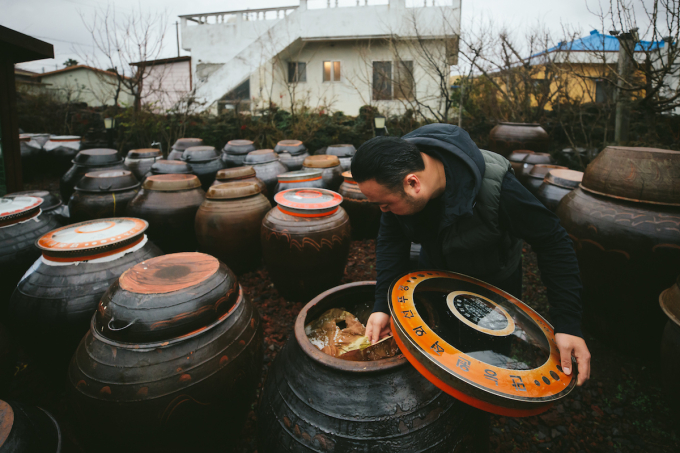
Korean food is all about ingredients. Not just fresh ingredients but ingredients that have been carefully preserved to last. While every cuisine has its own history of food preservation, few can surpass Korea in terms of the sheer range of ingredients that are preserved not to mention the various preservation techniques used. Koreans utilize every preservation technique available, and they pretty much preserve everything they can get their hands on.
Cabbage, radishes, chives, cucumbers, and all sorts of other vegetables are fermented into kimchi or pickled into jangajji. All types of seafood such as shrimp, octopus, anchovies and fish are salted, fermented and aged into what is called jeotgal. Seafood is also dried to be eaten as a snack or used rehydrated in a soup or stew. As with many other cuisines, fruit is dried or made into wines and preserves. Meat, however, used to be rare so there was never really any surplus to preserve except for the occasional jerky.
Whether through fermenting, pickling, curing, aging, or dehydrating, Korean cuisine is as much about the preservation of the ingredient as it is the cooking of the ingredient. For someone who cooks Korean food, this is very important to understand. Ingredients matter more so than with many other cuisines, because the flavors were already manipulated a long time before the ingredients reached the kitchen. These ingredients were transformed during the process of preservation. Of these preservation methods, fermentation techniques have evolved especially well in Korea, opening the door to myriad new and different flavors and textures.
While kimchi seems to be synonymous with Korean fermentation these days, when I think of Korean fermentation, I think first of Korean jangs. They are the building blocks of most Korean dishes. Jangs can generally be described as fermented pastes or sauces made with soybeans. The three jangs that dominate Korean cuisine are doenjang, ganjang and gochujang. These three foundational jangs are similar to the French ŌĆ£mother saucesŌĆØ since they are used to create all the other sauces and marinades used in Korean cooking. Having been fermented, the jangs are full of umami and packed with probiotics. Also, because they were fermented with salt, jangs are frequently used in place of salt to season dishes.
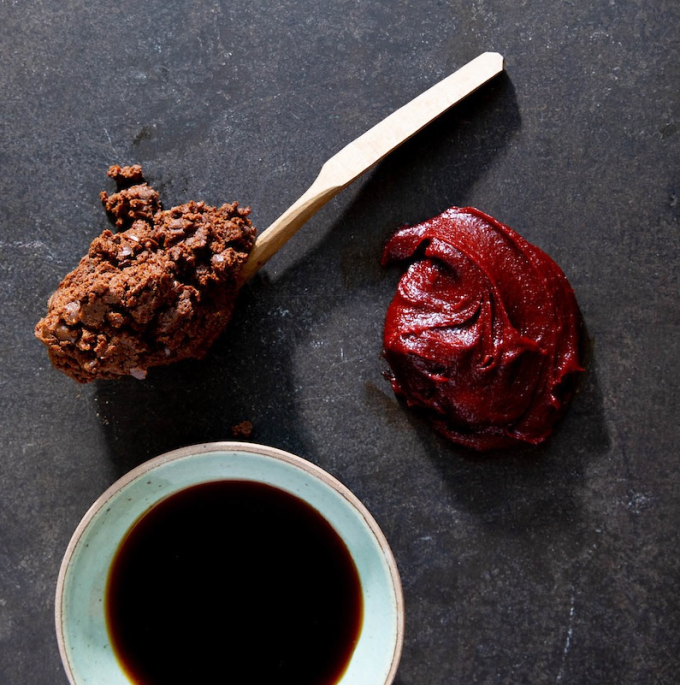
Doenjang is like Japanese miso on steroids. It has a stronger flavor profile than miso and the traditional fermentation techniques create significantly more probiotics. Doenjang is made by creating a mejoo block of boiled and mashed soybeans. The mejoo is then hung with straw inside and kept warm all winter to create and encourage growth of beneficial bacteria. The mejoo blocks are then placed in large clay jars, covered with salt water, and left to ferment. Eventually, the blocks break down and separate into a top layer of doenjang paste and a bottom layer of ganjang liquid. The jangs are separated and fermented even further, for at least a few months and sometimes up to several years. With age, the flavors of both jangs become more complex and deepen, as they do with wine.
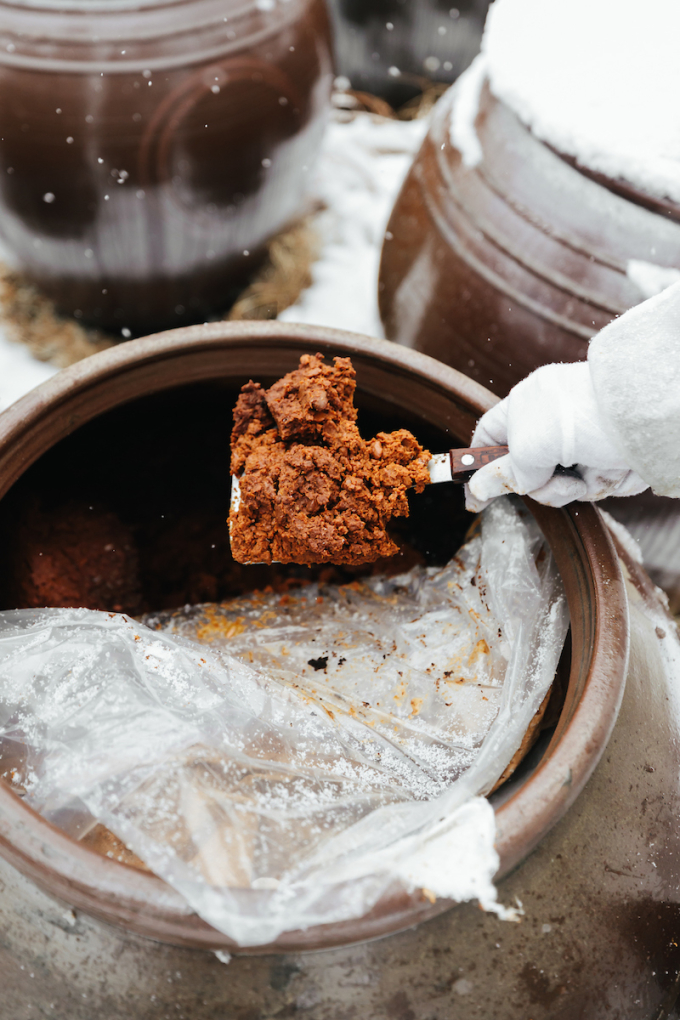
Ganjang is soy sauce and is made alongside the doenjang. It will taste very similar to Japanese or Chinese soy sauce except that traditional Korean soy sauce is made from mejoo rather than being quick fermented using wheat. Ganjang starts out light colored with a high sodium content (called guk ganjang), but as it ages over several years, it becomes darker, sweeter and less salty (called jin ganjang). Unfortunately, most of the supermarket ganjang is now mass-produced and quick-fermented using wheat. Even more unfortunate, most of the soy sauce labeled jin ganjang is not actually aged to become dark and sweet but are simply manufactured to look and taste that way.
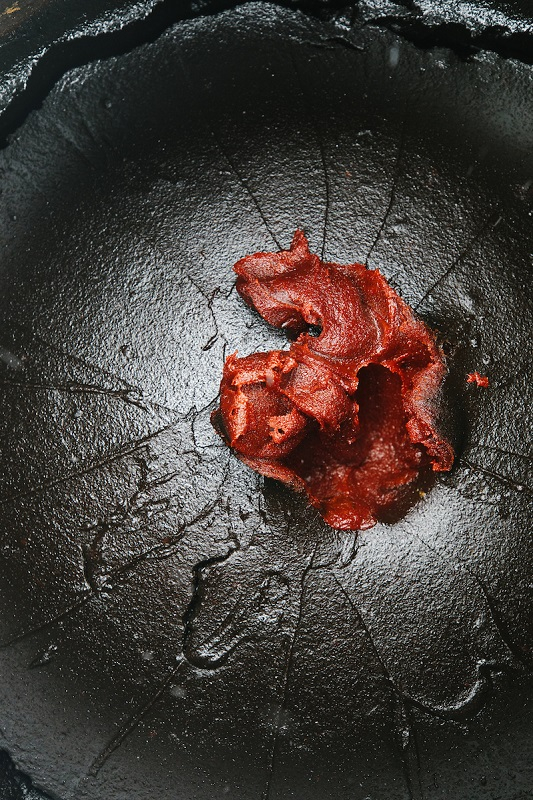
Many people who are unfamiliar with Korean food seem to think that gochujang is a condiment similar to, say, sriracha. However, that is not really the way itŌĆÖs used in Korea. Sure, you can make a quick and dirty bibimbap with just gochujang and some sesame oil or use it as dip for a dried seafood/jerky snack. But it is so domineering that it usually needs a bit of balance. Once you balance it out with other ingredients such as garlic, soy sauce, sesame oil, vinegar or even mayonnaise, it becomes a highly versatile ingredient.
Unfortunately, with the modernization of Korea most Koreans are now unable to make their own jangs. You can imagine it would be pretty tough in a city apartment. Therefore, a lot of jang is increasingly mass-produced by large food companies. This means it was processed in a factory using quick fermentation methods rather than being made in traditional way using mejoo. Quick fermentation makes the flavor of the jang more consistent and easier to mass-produce, but it usually means it contains wheat (which is not traditional) and doesnŌĆÖt contain as many beneficial probiotics. The flavors of mass-produced jang are still strong and will serve you if you donŌĆÖt have any other options, but if you ever have an opportunity to buy traditionally-made jang, do not hesitate. Buy it.
ItŌĆÖs not an exaggeration to say that these three jangs are the very essence of Korean cuisine. The vast majority of Korean dishes use jang as their flavor base. For anyone who wants to dabble in cooking Korean food at home, getting familiar with the flavors of these jangs is a necessary first step. If youŌĆśre lucky enough to find traditionally made jangs, it will really boost the chances that your Korean dishes will be delicious from the start. Give it a try, I promise you wonŌĆÖt regret it.
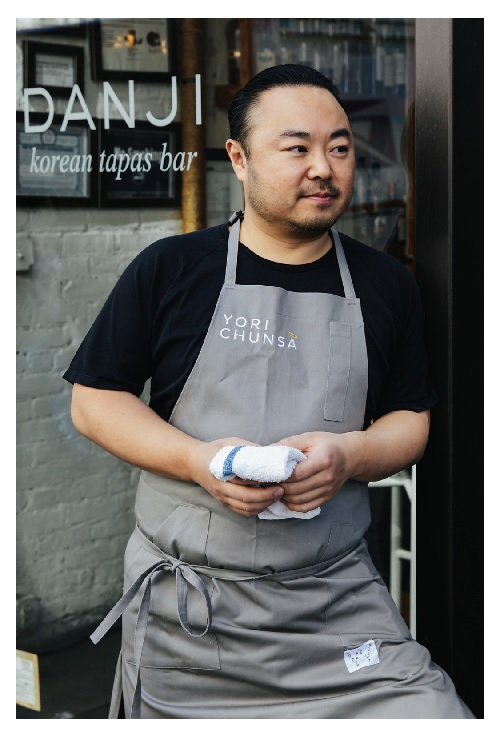
More to Read
-

-

-
 Taste memory
Taste memoryOct 09, 2020 (Gmt+09:00)
5 Min read
Comment 0
LOG IN


